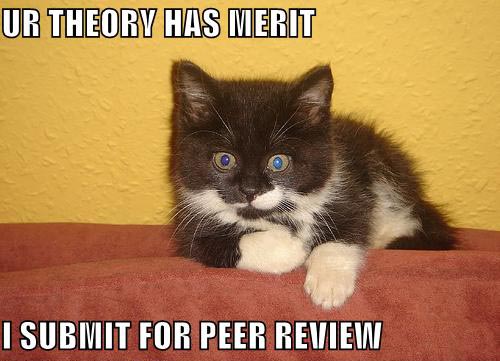Some years back, I gave a talk at O’Reilly’s ETech conference that urged the audience to spend less time thinking up clever ways dissidents could blog secretly from inside repressive regimes and more time thinking about the importance of ordinary participatory media tools, like blogs, Facebook and YouTube, for activism. I argued that the tools we use for sharing cute pictures of cats are often more effective for activism than those custom-designed to be used by activists.
Others have been kind enough to share the talk, referring to “the Cute Cat theory”. An Xiao Mina, in particular, has extended the idea to explain the importance of viral, humorous political content on the Chinese internet.
I’ve meant to write up a proper academic article on the ideas I expressed at ETech for years now, and finally got the chance as part of a project organized by Danielle Allen and Jennifer Light at the Institute for Advanced Studies. They invited a terrific crew of scholars to collaborate on a book titled “Youth, New Media and Political Participation”, now in review for publication by MIT Press. The volume is excellent – several of my students at MIT have used Tommie Shelby’s “Impure Dissent: Hip Hop & the Political Ethics of Marginalized Black Urban Youth“, which will appear in the volume, as a key source in their work on online dissent and protest.
I’m posting a pre-press version of my chapter both so there’s an open access version available online and because a few friends have asked me to expand on comments I made on social media and the “Arab Spring” at the University of British Columbia and in Foreign Policy. (I also thought it would be a nice tie-in to the Gawkerization of Foreign Policy, with their posting today of 14 Hairless Cats that look like Vladimir Putin.)
So – Cute Cats to the Rescue? Participatory Media and Political Expression.
Abstract: Participatory media technologies like weblogs and Facebook provide a new space for political discourse, which leads some governments to seek controls over online speech. Activists who use the Internet for dissenting speech may reach larger audiences by publishing on widely-used consumer platforms than on their own standalone webservers, because they may provoke government countermeasures that call attention to their cause. While commercial participatory media platforms are often resilient in the face of government censorship, the constraints of participatory media are shaping online political discourse, suggesting that limits to activist speech may come from corporate terms of service as much as from government censorship.
Look for the Allen and Light book on MIT Press next Spring – it’s an awesome volume and one I’m proud to be part of.

Pingback: Meet Ethan Zuckerman! | It's more complicated than that.
Comments are closed.